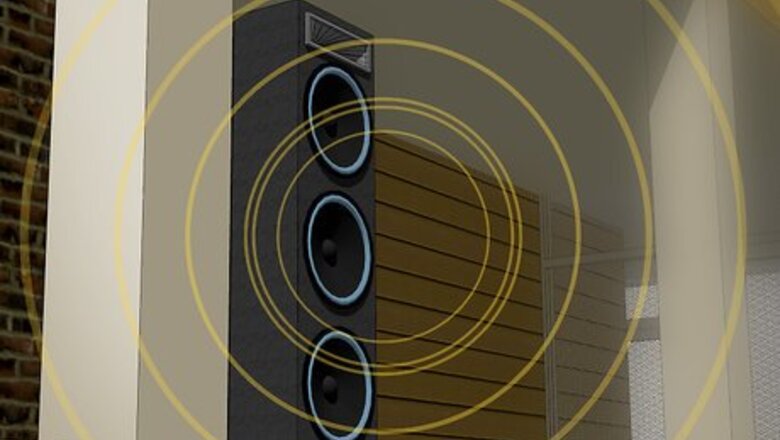
views
- Carpenter bees are sensitive to noise and vibrations. Playing loud music on speakers near the bees can drive them away.
- Spray carpenter bee holes with soapy water for a non-toxic way to get rid of the bees.
- To prevent future carpenter bee infestations, seal any holes in wood with plugs, putty, or caulk once all the existing bees are dead.
- Stain or paint outdoor wooden surfaces to deter carpenter bees.
Getting Rid of Carpenter Bees Without Insecticides
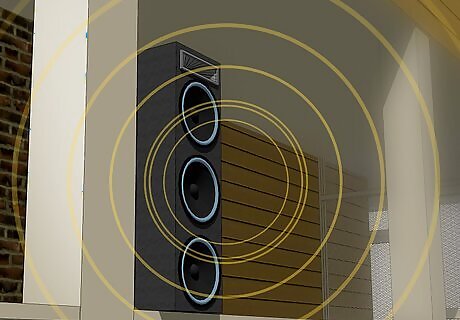
Play loud sounds on speakers to encourage nearby bees to leave. Carpenter bees are notoriously sensitive to noise (which may in fact be a sensitivity to vibrations). Set up a boombox or loud speakers next to the area they've infested and play loud music for 2-3 days to encourage them to leave. This method is one of the safest and least bothersome means of getting rid of carpenter bees. There is a chance the bees might eventually return to the area of infestation after you dispel them with loud sounds. For best results, take preventive measures on the wooden structure as soon as the bees have all left. If you have neighbors who live close by, make sure you let them know you plan to use noise to get rid of your bee infestation before beginning this process. The loud music may be bothersome to them.
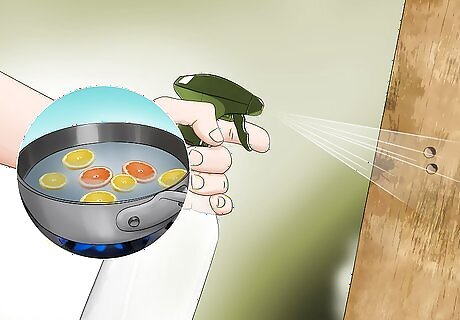
Spray infested areas with a natural citrus spray. Cut up the rinds of several different citrus fruits (orange, lemon, lime, grapefruit) and boil them in a shallow pot filled with water. Fill a spray bottle with the citrus-extract water and spray the carpenter bee burrows with it. Carpenter bees, like other insects, have a natural aversion to citrus oil (which is why the skin and rind protect the fruit on the inside — to keep it away from predators) and so will be particularly bothered by your citrus-extract spray. This spray won't kill the bees, but it will make them want to leave whatever wood they've built their nest in. EXPERT TIP David Williams David Williams Beekeeper & Bee Removal Specialist David Williams is a Professional Beekeeper and Bee Removal Specialist with over 28 years of beekeeping experience. He is the Owner of Bzz Bee Removal, a bee removal company based in the San Francisco Bay Area. Bzz Bee Removal locates, captures, and transports bees to local beekeepers to prevent colony collapse disorder. David Williams David Williams Beekeeper & Bee Removal Specialist Expert Trick: For a non-toxic way to get rid of carpenter bees, fill a spray bottle with soapy water, then spray that solution directly into the hole. That will kill the bee, and then you can seal the hole up to prevent moisture or other bees from getting in there.
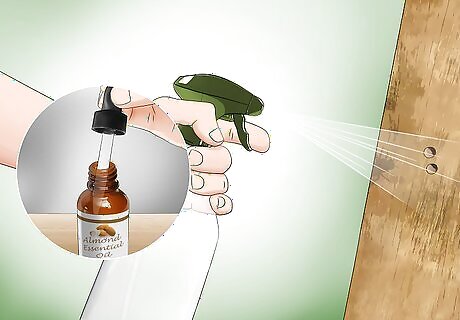
Apply almond oil or essence around the nest to repel bees. Like citrus spray, almond oil and almond essence is another tried and true option that repels carpenter bees. Place the oil around the nest and any visible bee holes to encourage the bees to leave and prevent future reinfestation.
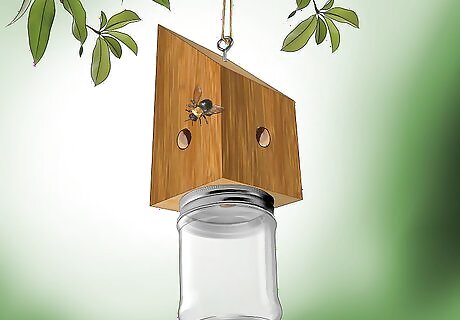
Place a physical bee trap that will lure in and trap carpenter bees. A very non-invasive means of getting rid of your bee infestation is to buy a bee trap and place it near the area of infestation. The trap will attract carpenter bees and prevent them from escaping, thereby slowly reducing the population of bees infesting your home. Hang your trap directly above the carpenter bee holes. If you don't have an infestation, hanging traps is also a good method of preventing one. You can find bee traps online, in pest control and home gardening stores, and in some department stores.

Use a tennis racket to kill carpenter bees when they're most active. In the spring, carpenter bees fly around looking for burrows to lay eggs and deposit pollen as food for the larvae. This means they are very active for 2-3 weeks. Use a badminton or tennis racket to effectively smack and kill carpenter bees. If you want to ensure the bees are dead after you smack them, you can also step on them with shoes after they've been smacked to the ground. Because male carpenter bees are unable to sting and are the ones most likely to be buzzing around the nest, you're unlikely to be stung using this method. Note that this is NOT a preferred method of getting rid of your bee infestation, since carpenter bees are helpful pollinators that are necessary for the proper cultivation of many crops.
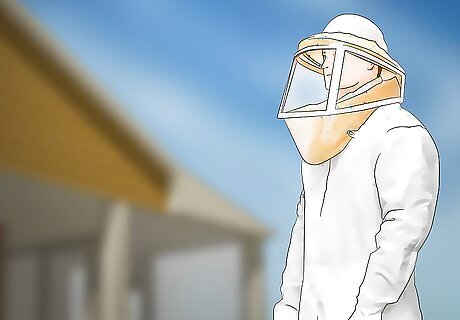
Have a beekeeper relocate the bee nest if you don't want to kill them. If you want to get rid of your carpenter bee problem without killing them, your best bet is to contact a professional beekeeper and have them relocate the nest. You may have to pay them for this, but it will be better than having to kill a large number of bees.
Using Pesticides
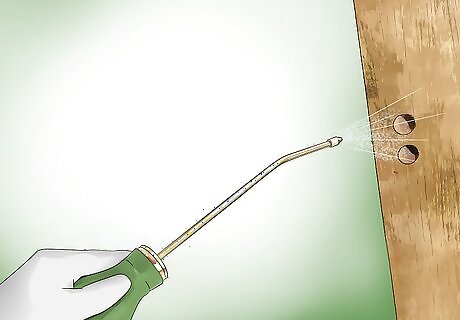
Apply insecticidal dust in deep burrows to kill current and future bees. Insecticidal dusts and powders are the most effective insecticides for active carpenter bee nests that have been dug deep into a wooden structure. Use a hand duster to apply insecticidal dust directly into the carpenter bee holes to kill the existing bees and prevent further growth of the bee population. Apply the dust at night to minimize your chances of being stung. You should only have to apply insecticidal dust once per season. Recommended insecticidal dusts include Sevin and Delta Dust Insecticide.
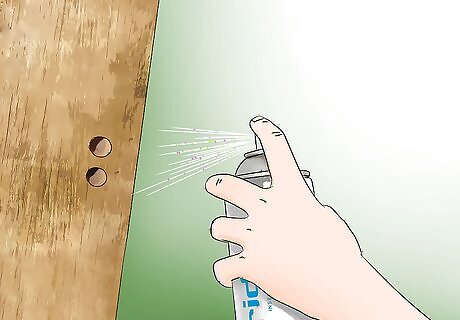
Use a residual liquid insecticide if the infestation isn't deep. If the bees haven't had time to burrow deeply into the wood their nest is in, you might take the easier route of spraying insecticide on the burrows you see. There are a number of insecticides available for purchase anywhere you buy gardening equipment. Consider buying a residual insecticide and spraying them on the carpenter bee holes to get rid of your infestation. Some recommended insecticide sprays include Cyzmic CS, Demon WP, and FenvaStarCap. For best results, spray insecticide on the holes twice during the spring at intervals of roughly 3-4 weeks.
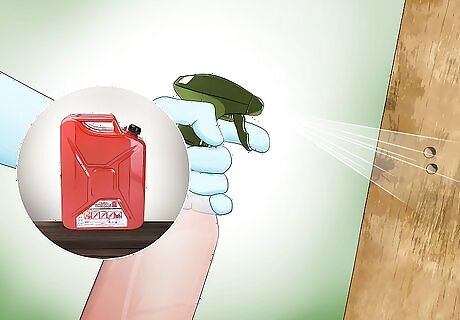
Kill the carpenter bees with petrol if you don't have access to pesticide. A tried and tested remedy for bees is spraying petrol or diesel into their burrows as a “homemade” pesticide. Use this method to avoid having to spray actual insecticides into your wood. Petrol and diesel are both flammable liquids. Make sure you don't use them near a source of ignition. Avoid getting petrol on your skin or inhaling its fumes. Wear an N-95 respirator, some goggles, and gloves when applying petrol to the holes. If using a spray bottle to spread petrol, be sure to label it and set it aside for petrol-only use in the future. You probably don't want to use the spray bottle to spritz your plants with water after using it to gas carpenter bees.
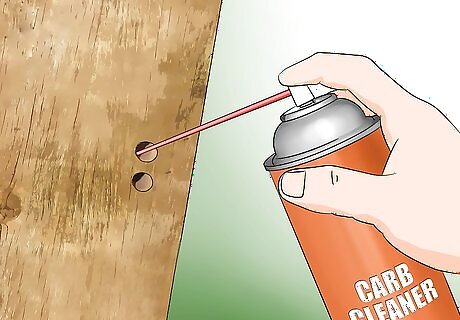
Consider spraying the burrows with carburetor cleaner. While it's not the most gentle product to use for carpenter bee extermination, it's certainly effective. An aerosol carburetor cleaner that has an extension tube for the can will either kill bees instantly or discourage them from taking up residence in your home. Aerosol carburetor cleaner can be cheaply bought at any auto supply store. Be very careful to not get this in your face or eyes; wear protection and read the precautions for safety.
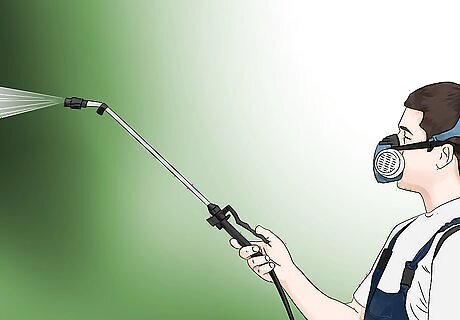
Hire an exterminator to have your infestation handled by a professional. If attacking your carpenter bee infestation is not something you're keen to do personally, your best bet is to hire an exterminator. Professional exterminators know what they are doing and can rid your home of bees efficiently.
Preventing Carpenter Bee Infestations
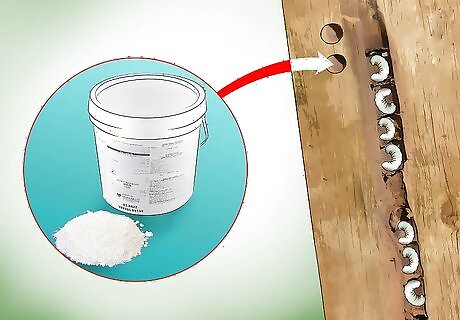
Use insecticidal dust to stop the cycle of reproduction. It's not enough to merely kill the adult bees or the reproducing females; you need to kill the bee larvae in their nests in order to keep them from reproducing. Apply insecticidal dust to the holes burrowed by the carpenter bees to ensure that larvae that are hatched will be killed. Make sure you use dust to stop the reproduction cycle; other insecticides can become absorbed into the wood or wear off before the larvae are hatched. Do not seal up the hole when first applying the insecticide dust. This forces the carpenter bees to burrow new holes, meaning there's a chance they won't pass through the insecticide.
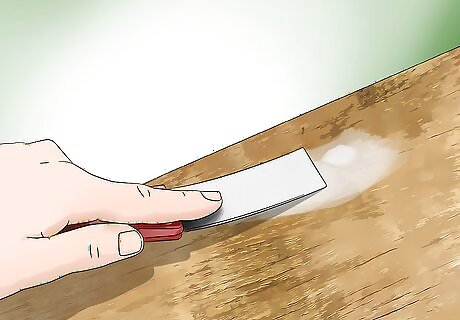
Plug the carpenter bee holes after all the bees have been killed. After the bees have all been removed from existing burrows, seal the holes with plugs, puddy, or caulking compound to prevent their future use by other bees. Make sure all the bees are dead before plugging the existing holes. Any carpenter bees that become trapped by the plugs will simply drill new tunnels into the wood around them. The best time to fill in these holes is in the fall months.
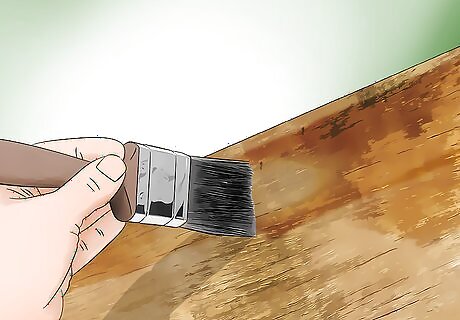
Stain or paint outdoor wooden surfaces to discourage bee infestation. Although carpenter bees can attack all wood surfaces, they tend to prefer untreated wood. Paint or stain with varnish any untreated wooden surfaces outside that may attract carpenter bees. Painted wood is slightly better at discouraging infestation than stained wood, but the difference is effectively marginal.
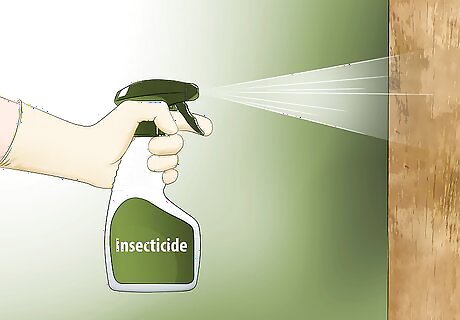
Spray wooden surfaces with insecticide in the spring. The final step to preventing carpenter bee infestation is to spray insecticide on outdoor wooden surfaces that may attract carpenter bees. If you'd prefer not to use insecticide, hanging bee traps near wooden surfaces is also an effective deterrent. Particularly vulnerable areas include underneath rail sidings, under decks, and around window sills. Untreated wood is especially vulnerable to infestation and should be treated with insecticide if it hasn't been painted or stained.




















Comments
0 comment